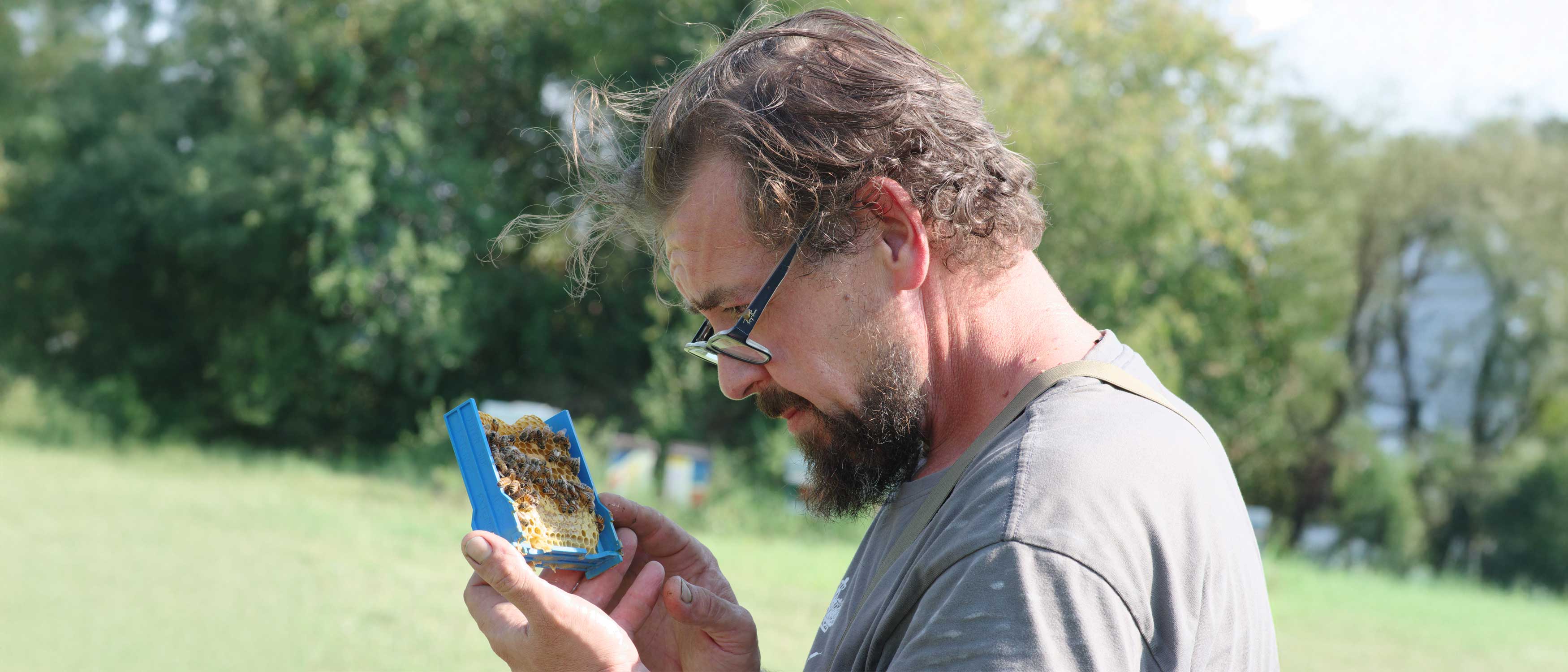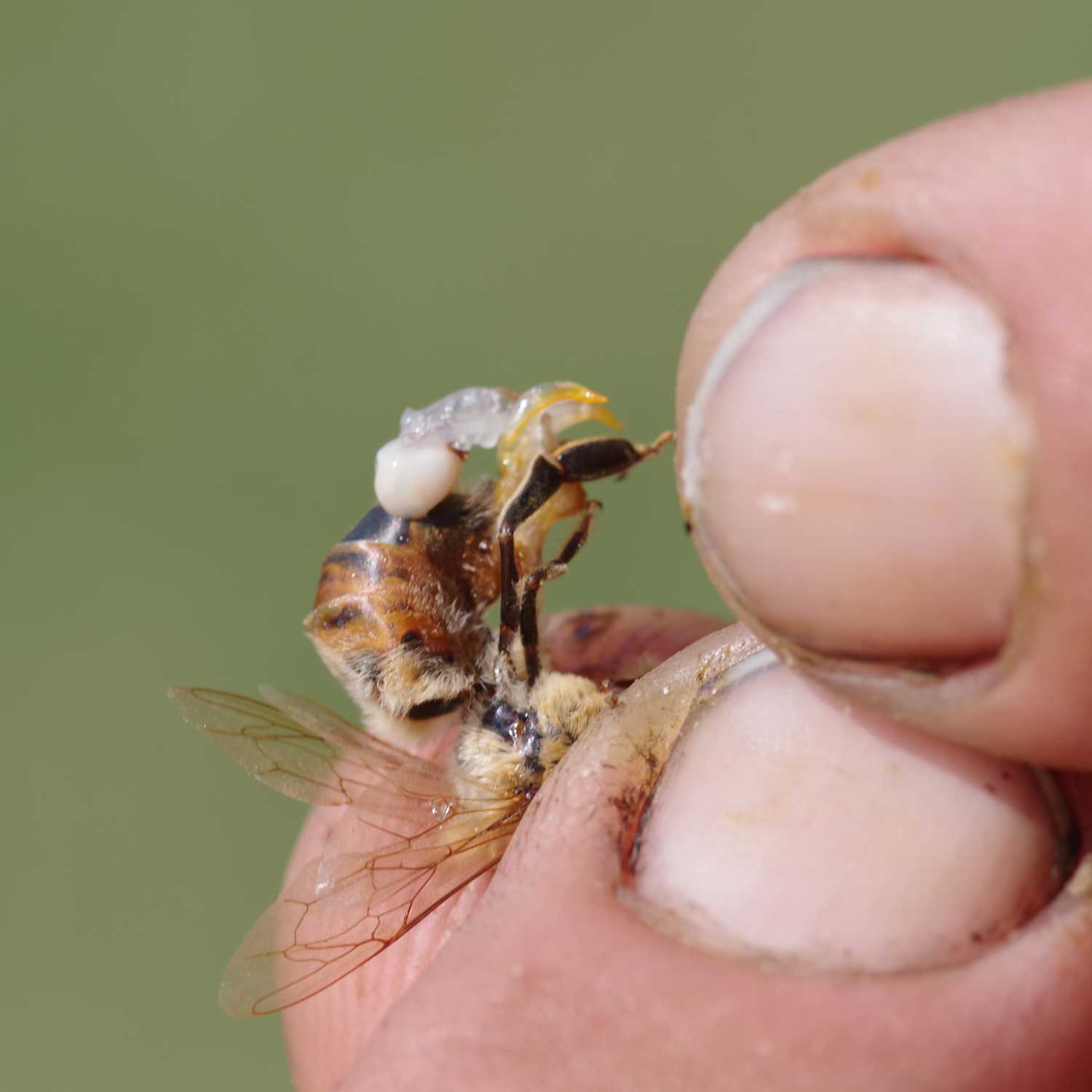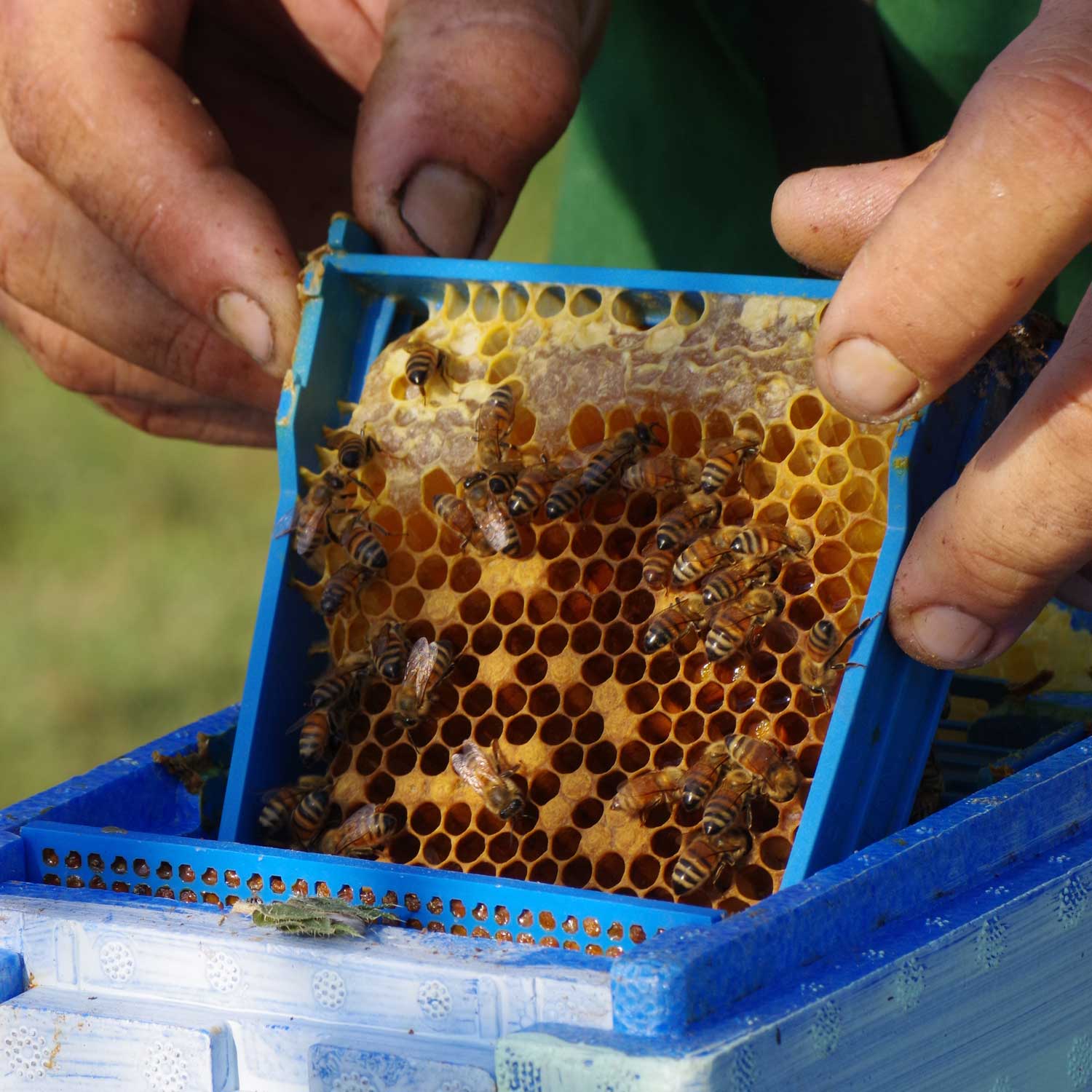How it's work
How are the best breeders selected?
A structured process of observation, evaluation, and selection that starts with setting up the apiary, goes through colony monitoring, and leads to the choice of the best breeders.

-

Evaluation
The selection process evaluates colonies in the apiary through seasonal observations, hygienic tests, productivity, and Varroa control, choosing the best phenotypes as the future breeding base.
-

Choice
After targeted observations, I select colonies with productivity, gentleness, order, hygiene, and swarm control, creating the genetic base for queens and drones intended for reproduction.
-

Control
To preserve the Ligustica, I combine instrumental insemination and natural mountain mating, bringing together technical rigor and nature to ensure genetic continuity.
Evaluation
-

-
The selection process begins with the establishment of an evaluation apiary of about 60 colonies, prepared in the autumn preceding the observation year. The colonies are formed at different times during the summer season and are headed by groups of maternal sisters, coming either from instrumental insemination on the farm or from queens mated in the isolated mating area. From this moment on, the observation phase begins and continues until the beginning of the following spring.
In spring, the actual evaluation phase starts. I begin by assigning each colony a score for wintering quality, taking into account the hive’s population and food consumption. At every visit, I note whether the colony shows aggressive or nervous behavior outside the apiary average. I then proceed by monitoring spring development, evaluating factors such as precocity, balance, and conservation of food reserves.
ONLY on vigorous colonies, I carry out ONE SINGLE INTERVENTION of swarm control during the first week of April, removing any excess brood frames.
From this moment on, I continue the inspections without worrying about swarming. Some colonies that decide to swarm exclude themselves from the selection process. Before adding the honey supers (generally in the second half of April) and after the second harvest (generally in mid-June), I carry out hygienic tests (PIN TEST with readings at 6–8h and at 24h, counting only the cells completely cleaned out).
In early May, I add the honey supers and evaluate the production of individual colonies during the acacia harvest (May) and the city linden harvest (June). On the most productive colonies, I perform phoretic varroa control using the VEC method. The colonies that best expressed the phenotypes I take into account provide the mother queens for the following season, and their daughters are either instrumentally inseminated or mated in a reasonably isolated area.

Selection of breeders
After a period of systematic observation, I select the colonies that express the most useful traits for breeding: productivity, gentleness, moderate swarming tendency, brood nest order, and hygienic instinct. The families that meet these criteria become the base for producing queens and drones intended for reproduction, thus ensuring genetic continuity and consistency.

Control of matings
Maintaining the characteristics of the Ligustica requires careful management of matings. For this reason, alongside instrumental insemination, I also use natural mountain mating, which takes place in an isolated and controlled environment. In this way, I can combine technical rigor and natural conditions, ensuring high reliability in passing the desired traits on to future generations.
-
Who I am
Learn more -
Our project
Learn more




